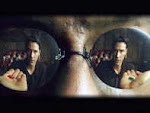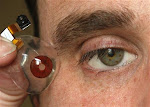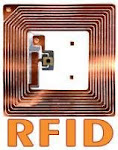 "The world's first reusable 3-D screen debuts, thanks to new photorefractive film that can be written on and erased again and again..."
"The world's first reusable 3-D screen debuts, thanks to new photorefractive film that can be written on and erased again and again..."For most technophiles, a hologram evokes grainy images in Star Wars of Princess Leia pleading for Ben "Obi-Wan" Kenobi's help. More than three decades later, holograms have evolved little beyond providing authentication features on driver's licenses and credit cards. But that all could change soon with the development of a new photorefractive polymer that paves the way for 3-D images that will one day help doctors study X-rays, engineers design buildings, military officers plan battles-as well as be used in movies, video games and other multidimensional entertainment. No paper or plastic eyewear needed.Researchers at the University of Arizona's College of Optical Sciences (OSC) in Tucson, and engineers from Nitto Denko Technical Corporation, in Oceanside, Calif., recently unveiled a prototype of a photorefractive polymer film on which 3-D images can be recorded, erased and replaced with new images. When carried out swiftly enough, this process leads to a series of images on the film that deliver three-dimensional action that can be picked up by the naked eye.Conventional holograms-such as the silver bird emblazoned on credit cards to verify their authenticity-are static and have no memory. But "imagine a hologram that is dynamic, where the image is changed frequently," says Nasser Peyghambarian, chair of photonics and lasers at the OSC.The University of Arizona photorefractive polymer is significant for several reasons, says Joseph Perry, a professor of chemistry and biochemistry at the Georgia Institute of Technology in Atlanta and associate director for photonics at the school's Center for Organic Photonics and Electronics. First of all, he says, it's "updateable"—images can be written, erased and rewritten onto the polymer in much the same way music and video is burned onto CDs or DVDs. "Equally important," he says, is that the researchers were "able to build the display using very basic materials." Dynamic holography has been possible using lithium niobate crystals, but the process of growing these crystals into large display screens is far more difficult and less practical than creating a polymer film.The polymer is a complex composite of copolymers (which acts as a photosensitizer and absorbs light), a plasticizer (an additive used in plastics to provide strength and flexibility) and other materials formed into a film and melted between four-inch (100-millimeter) indium tin oxidecoated glass electrodes. Prototypes of the polymer so far offer small—foursquare inch (25square centimeter)—monochrome images of a car, human skull and molecule that can be viewed from different angles in front of the flat display.Images are recorded onto the polymer using a green laser with 532-nanometer (billionths of a meter) wavelengths, whose light gets absorbed, creating a charge distribution across the material that modifies the film's refractive index and creates a 3-D image that can be viewed when the film is illuminated.The key to creating what amounts to three-dimensional video using the polymer is the ability to change images in within about 30 milliseconds (thousandths of a second), quickly enough so that the eye doesn't notice. Not an easy thing to do with data-heavy 3-D images—today it takes more than two minutes to write an image across a piece of polymer."Take a glass of water,"Peyghambarian says. "How much information from every angle of the glass would you need to make a 3-D image of it? You have to put all of those coordinates in the memory and, when the scenery moves, that adds even more data." With a sensitive enough polymer or more laser power, an entire image could be written in a one flash, Perry adds.
As in the days of Noah....






















































































.bmp)

























.bmp)